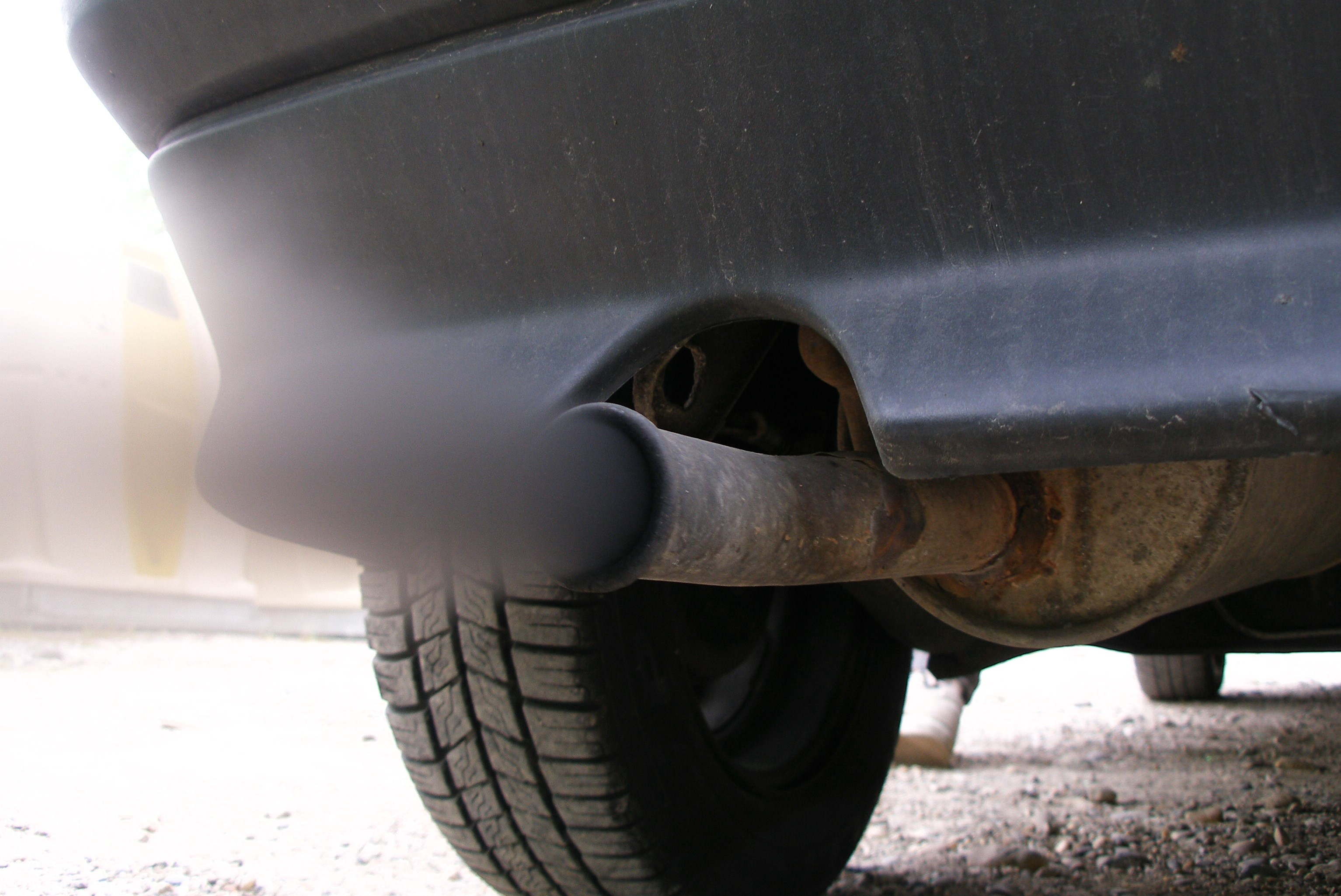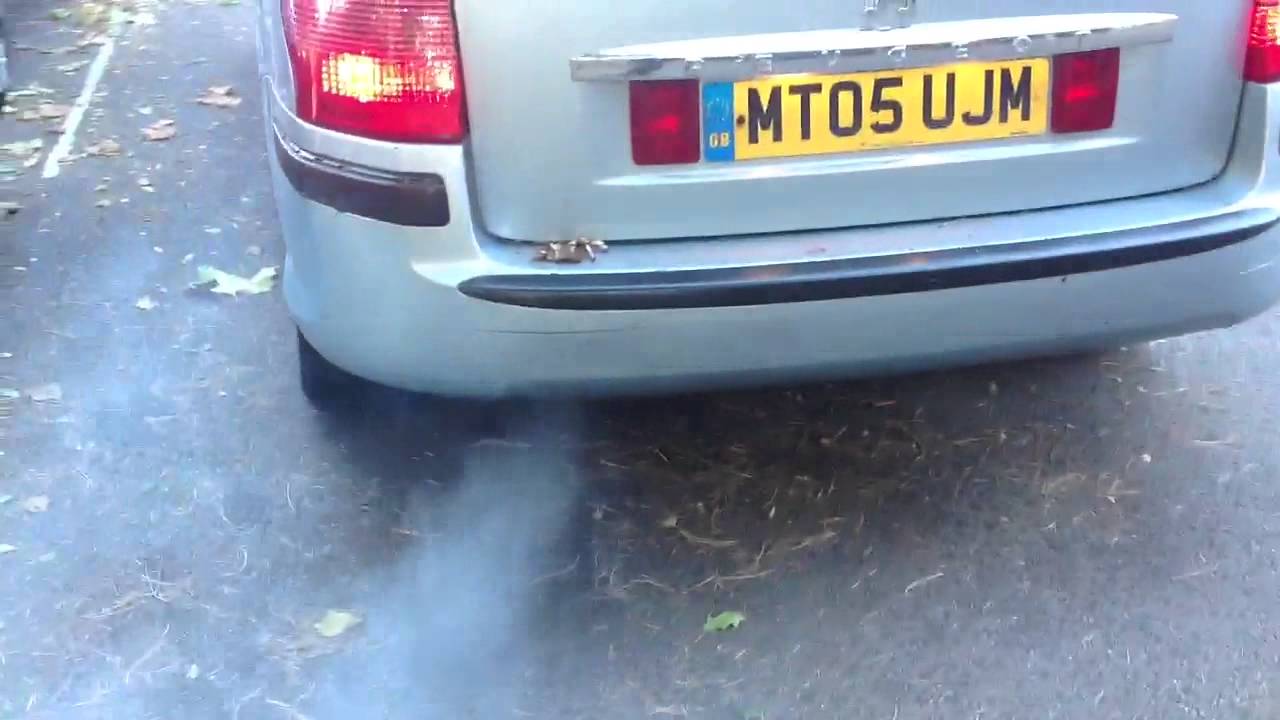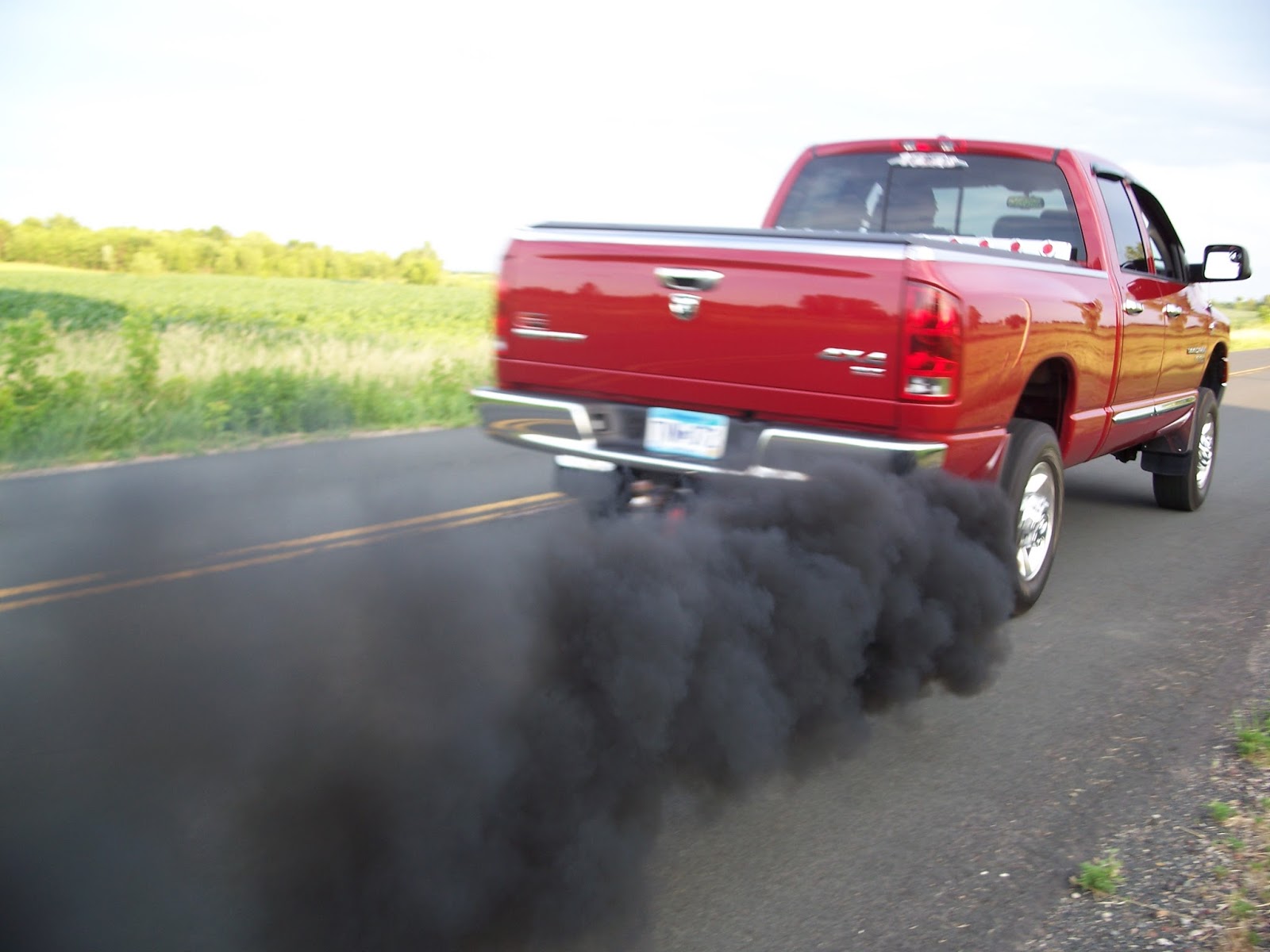
When some materials enter the combustion chamber, they lead to a change in the color of the exhaust smoke. By knowing the color of the exhaust, you can infer engine problems and enable you to determine what can be done to adjust and fix the problem.
white smoke:-
Indicates a water or coolant fire. It is normal to notice white smoke when starting the car on cold days. The condensed water inside the motor will combust the white smoke component. This should disappear after the engine has reached operating temperature. White smoke that does not clear indicates that there is water entering the combustion chamber. Make a constant note of the coolant level in the radiator. If the coolant level is low, the cause may be a damaged cylinder head interlock (face/gasket), a crack in the cylinder head or engine block.
black smoke:-
It means excess fuel enters the combustion chamber. There may be injector liquefaction, shutoff of the throttle valve initiating the management, liquefaction of the carburetor float needle, or a float problem. The oxygen sensor is damaged so that it gives a signal to the computer that the fuel is weak, which causes the computer to increase the injection time and introduce excess fuel to the engine.
Blue smoke (bluish gray):-
, means that engine oil or transmission oil enters the engine. It could be due to damaged piston rings, worn valve guides, damaged cylinder head interlocks, a broken transmission shift regulator. Note the engine and transmission oil level to confirm the source of the leak. Excess oil in the exhaust may damage the oxygen sensor.
The engine consumes more oil than normal, and there is smoke in the exhaust.
It is noticed that the oil level is low, the presence of smoke in the exhaust indicates that the oil is being burned by the engine. You may or may not notice that the engine does not have the same power as it did before.
Possible reasons:-
1. PCV Possibility that the crankcase forced vent valve is not operating properly: Replace the valve.
2. Possibility that the engine has mechanical problems: Test the engine pressure to judge the condition of the engine.
3. Possible wear of the piston rings: Replace the piston rings.
(This process falls under What You Can’t Do Yourself) (not a DIY job).
4. Possible corrosion of the engine valve interlock: Replace the valve interlock.
(This process falls under What You Can’t Do Yourself) (not a DIY job).
Gray smoke in the exhaust:-
You notice gray smoke in the exhaust when turning the car. The smoke may or may not go away after the engine has reached operating temperature. In the event of its disappearance, it becomes less noticeable. The smoke may be bluish.
Possible reasons:-
1. Possible wear of the piston rings: Replace the piston rings.
(This process falls under What You Can’t Do Yourself) (not a DIY job).
2. Possible corrosion of the engine valve interlock: Replace the valve interlock.
(This process falls under What You Can’t Do Yourself) (not a DIY job).
3. Possible damage or wear of the valve guide: Change the valve guide.
(This process falls under What You Can’t Do Yourself) (not a DIY job).
Gray smoke time:
- When starting the engine: due to damage to the valve interlock (oil is allowed to drain through the valve guide into the combustion chamber)
- When accelerating the engine speed: as a result of wear of the screws
- Engine idle: due to wear in the valve guide
White smoke or water vapor in the exhaust:-
You notice white smoke in the exhaust when turning the car. In the event that the weather is cold, this is considered normal. If the smoke does not disappear after reaching the operating temperature, this indicates that there is a problem.
Possible reasons:-
1. Transmission fluid may enter the intake manifold through the vacuum regulator: change the vacuum regulator.
2. The cylinder head interlock may be damaged: Replace the cylinder head interlock.
3. Possible cylinder head warping or cracking: Modify or change the cylinder head.
(This process falls under What You Can’t Do Yourself) (not a DIY job).
4. Possibility of cracking the cylinder block: Change the cylinder block.
Black smoke in the exhaust:-
You notice black smoke in the exhaust when turning the car. The possibility that the smoke will disappear with the engine’s operating temperature and may not disappear. If it disappears, it becomes less noticeable. You may or may not notice that the engine is running hard or there is an ignition cut off.
Possible reasons:-
1. In the case of a car carburetor, there is a possibility that the throttle has started and the drive is in the closed position: repair or replace it.
2. Fuel injectors may liquefy: Replace the injectors.
3. The air filter may be clogged: Replace the air cleaner.
4. Possible other problems with the ignition: Check the distributor cap, the rotor. The ignition regulator may be damaged.
Exhaust smell:-
The car consumes more fuel than normal, and there is a strong smell in the exhaust:
Significant increase in fuel consumption (or reduced mileage for the same amount of fuel). There is a strong smell similar to the smell of rotten eggs emitted from the exhaust. You may or may not notice that the car does not have the same power as usual.
Possible reasons:-
1. In the case of a car carburetor, there is a possibility that the throttle has started and the drive is in the closed position: repair or replace it.
2. Possibility that the engine has mechanical problems: Test the engine pressure to judge the condition of the engine.
3. Possibility of wrong ignition timing. Adjust the ignition timing.
4. The possibility of a fault in the electronic control system of the engine. Check the engine control system with a scan tool. Check circuits and repair or replace parts as required.
(This process falls under What You Can’t Do Yourself) (not a DIY job).
5. The engine may be too hot. Check and repair the cooling system.
6. Fuel injectors may be installed in the partially open position. Replace the atomizers.
7. One of the pollution control units may not be working properly.
8. There may be ignition problems: check and replace the distributor cap, rotor, spark wires and spark plugs.
9. There may be problems with the fuel pressure regulator (working at a pressure above the limit): Check the fuel pressure with a fuel pressure gauge. Replace the fuel pressure regulator.
(This process falls under What You Can’t Do Yourself) (not a DIY job).
There is the smell of rotten eggs emanating from the exhaust:-
When you start the engine and if the car stops, you notice an unpleasant smell from the exhaust. This smell is like rotten eggs. It is not only you who notices this, but everyone who stands or passes around the car.
Possible reasons:-
1. There is a possibility of damage to the electronic engine control system: Check the engine control system with a scan tool. Inspect circuits and repair or replace parts as required.
(This process falls under What You Can’t Do Yourself) (not a DIY job).
2. There are ignition problems: check and replace the distributor cap, rotor, spark wires, and spark plugs.
3. The fuel pressure regulator is damaged: Check the fuel pressure with the fuel pressure gauge: Replace the fuel pressure regulator.
(This process falls under What You Can’t Do Yourself) (not a DIY job).
4. The engine may have mechanical problems: carry out a stress test to confirm the condition of the engine.
5. The engine may be too hot. Check and repair the cooling system.
There is a strong smell of gasoline emanating from the exhaust:-
You notice the smell of gasoline coming from the exhaust. Make you think there is a gas leak. It is not only you who notices this, but everyone who stands or passes around the car. You may or may not notice higher fuel consumption (or lower mileage for the same amount of fuel).
Possible reasons:-
1. There is a possibility of damage to the electronic engine control system: Check the engine control system with a scan tool. Inspect circuits and repair or replace parts as required.
2. There are ignition problems: check and replace the distributor cap, rotor, spark wires, and spark plugs.
3. The nebulizer is not clean: Clean or replace the nebulizer.
4. The engine may have mechanical problems: carry out a stress test to confirm the condition of the engine.
5. In the case of a car carburetor, there is a possibility that the throttle is installed in the closed position: repair or replace.
6. There may be vacuum leakage: Repair or replace the vacuum lines.
Smoke and smell from the car:
Smoke coming out from under the hood:
Most likely you will see smoke coming out from under the hood when starting the car or when stopping at a traffic light. It may or may not be associated with problems with engine operation at empty load. This smoke cannot be ignored as it may cause engine damage or a fire. The cause of the problem can be determined by color, smell, and amount of smoke.
Possible reasons:
1. If the smoke smells like oil, there is an oil leak: fix the leak.
2. If the smoke is white, there is a possibility of coolant leaking: fix the leak.
3. If the smoke is blue or black and has a strong smell, there is a wiring fire: Repair the wiring.
The car consumes more fuel than normal, and there is a strong smell of gasoline coming from the car:-
Significant increase in fuel consumption (or reduced mileage for the same amount of fuel). There is a strong smell of gasoline coming from the engine when it is stopped. You may or may not notice that the car does not have the same power as usual.
Possible reasons:-
1. Possible fuel pipeline leak: Repair or replace the fuel line.
2. The engine may have mechanical problems: carry out a stress test to confirm the condition of the engine.
3. The fuel pressure regulator may be operating at high pressure: Check the fuel pressure with a fuel pressure gauge. Replace the fuel pressure regulator.
(This process falls under What You Can’t Do Yourself) (not a DIY job).
4. There may be liquefaction in the atomizer: Replace the atomizer.
5. Possibly the fuel tank cap is missing or damaged: Replace the gas tank cap.
There are no reviews yet. Be the first one to write one.


